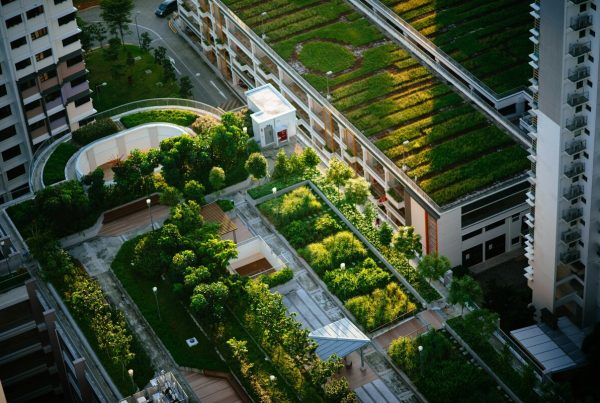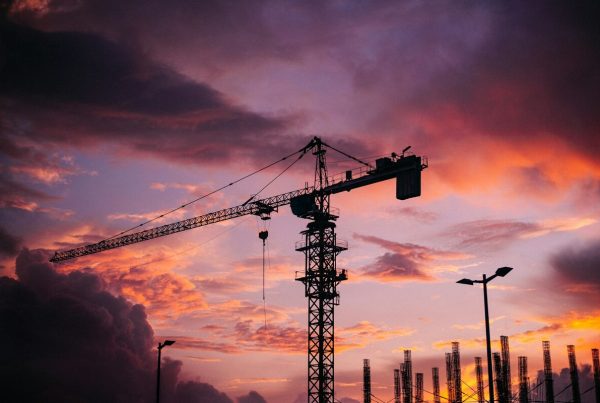The Internet of Things has significantly contributed to the advancement of automated vehicles and equipment. When working together, these two technologies can enable engineers, architects, contractors and other professionals to unlock the full sustainability potential of their building projects. Explore how they harness the power of the IoT and automation to the environment’s advantage.
How the IoT Promotes Eco-Friendly Practices
The Internet of Things is a digitally linked universe of various devices with a private internet connection for secure communication. Each device also has sensors that monitor its surroundings and gather data in real time, which allows the devices to improve their specific functions steadily.
Professionals can install IoT sensors in all kinds of construction equipment, from the largest dozers and excavators to the smallest handheld tools. Here are various ways the IoT promotes eco-friendly practices in the construction industry.
1. Efficient Resource Management
The IoT’s greatest environmental benefit to construction is more efficient resource management. Real-time equipment monitoring allows site managers to track fuel consumption and make predictive maintenance decisions, keeping the equipment in better condition. The IoT can even help with water and waste management by optimizing disposal processes around the site.
It also conserves the most important resource of all — time. According to a recent study of more than 500 construction companies, 50% of the surveyed organizations said time delays were their biggest problems. The IoT reduces operational costs, boosts employee productivity and eliminates avoidable downtime.
Shorter projects are always more sustainable than longer ones. Rather than spending more time and money on maintenance, repairs, and careless resource consumption, construction companies only have to pay for what they need and minimize each project’s carbon footprint.
2. Enhanced Productivity, Safety and Security
The IoT directly improves employee productivity by enhancing worksite safety and security. Crews can wear devices with built-in sensors that track their health and working conditions, detecting problems before they lead to injuries or damaged equipment. The IoT enables a proactive approach to these delays instead of a reactive one.
Constantly monitoring construction equipment is a huge improvement to the industry’s safety and sustainability standards. Connected surveillance systems help managers identify and address unsafe or wasteful behavior patterns. If an incident occurs, real-time monitoring enables a faster emergency response. Safety and sustainability walk hand in hand.
3. Improved Building Maintenance
Builders can also implement IoT energy management solutions such as smart meters and smart home devices to create a more efficient power grid. These appliances help homeowners and businesses monitor their lighting, plumbing and HVAC systems to optimize energy usage.
IoT sensors can even monitor environmental factors like air quality, noise pollution and waste disposal. Citizens can access this information about their communities through their mobile devices, allowing them to provide feedback and participate in local sustainability initiatives.
Automation’s Expanding Role in Sustainable Construction
While the IoT helps construction professionals optimize their resource management from start to finish, automated technologies can perform specific tasks independently. Here’s how automation’s role is expanding its in sustainable construction.
1. Construction Robotics
Autonomous robots and equipment are quickly taking over construction sites. There are robots available for bricklaying, welding, painting, drilling, digging and many more repetitive jobs. They’ve proven to be faster and more precise than humans, showing unmatched attention to detail that optimizes the infrastructure of their buildings.
For the environment’s sake, construction robots avoid logistical errors and only use as many materials as they need. With human error out of the picture, project managers can ensure every menial task consumes as little resource and energy as possible. Automated material handling is more important than ever, with sky-high prices making extra supplies hard to come by.
2. Prefab Building
Automated technology also promotes a more eco-friendly type of construction — prefab building. Rather than building the entire structure on-site, project managers can create bits and pieces in a controlled warehouse to improve energy efficiency, use materials properly, and minimize waste. Prefab brings a much greater level of certainty to construction.
Certain aspects of prefab building have stood out above the rest. For example, 3D printing can significantly reduce construction pollution by eliminating practices that contribute to greenhouse gas emissions, soil pollution and stormwater runoff. Rather than taking the labor- and resource-intensive route to acquire materials, companies can print them instead. This automated technology also makes it much easier to create eco-friendly building designs.
3. Building Information Modeling
Building information modeling (BIM) is an automated software that creates detailed three-dimensional blueprints of construction projects, providing a new level of visualization that helps managers make better decisions. It also helps off-site employees — including stakeholders — stay in the loop, ensuring safety and sustainability standards are met.
BIM’s data-driven designs are the perfect resources to help project managers implement sustainable features. It can instantly evaluate the building’s energy expenditure, hazardous materials and other areas of improvement. These issues usually don’t become apparent until later on, but BIM reveals them during the initial design phase.
The IoT and Automation Are Here to Stay
The IoT enables sustainable practices, all the way from resource consumption during the building phase to long-term maintenance. Meanwhile, automated technology is optimizing specific tasks, removing human error from the equation and reducing the industry’s environmental impact. These technologies are here to stay, and planet Earth will be thankful for their contributions for years to come.











